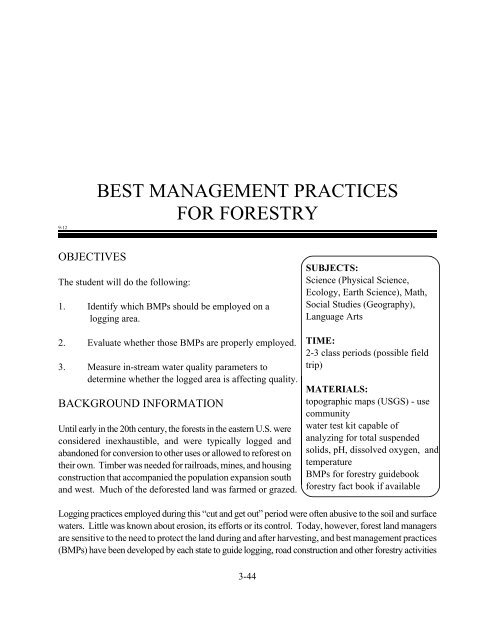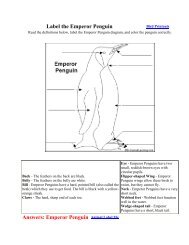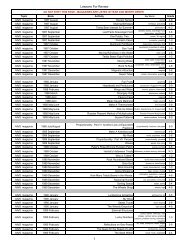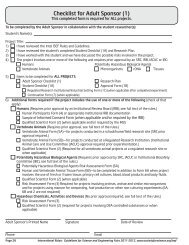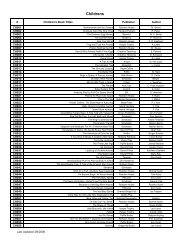BIOGRAPHY OF A RIVER
BIOGRAPHY OF A RIVER
BIOGRAPHY OF A RIVER
You also want an ePaper? Increase the reach of your titles
YUMPU automatically turns print PDFs into web optimized ePapers that Google loves.
9-12BEST MANAGEMENT PRACTICESFOR FORESTRYOBJECTIVESThe student will do the following:1. Identify which BMPs should be employed on alogging area.2. Evaluate whether those BMPs are properly employed.3. Measure in-stream water quality parameters todetermine whether the logged area is affecting quality.BACKGROUND INFORMATIONUntil early in the 20th century, the forests in the eastern U.S. wereconsidered inexhaustible, and were typically logged andabandoned for conversion to other uses or allowed to reforest ontheir own. Timber was needed for railroads, mines, and housingconstruction that accompanied the population expansion southand west. Much of the deforested land was farmed or grazed.SUBJECTS:Science (Physical Science,Ecology, Earth Science), Math,Social Studies (Geography),Language ArtsTIME:2-3 class periods (possible fieldtrip)MATERIALS:topographic maps (USGS) - usecommunitywater test kit capable ofanalyzing for total suspendedsolids, pH, dissolved oxygen, andtemperatureBMPs for forestry guidebookforestry fact book if availableLogging practices employed during this “cut and get out” period were often abusive to the soil and surfacewaters. Little was known about erosion, its efforts or its control. Today, however, forest land managersare sensitive to the need to protect the land during and after harvesting, and best management practices(BMPs) have been developed by each state to guide logging, road construction and other forestry activities3-44


